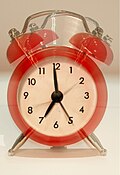Blogger and Google Apps Domains
 Previously I've described Google Accounts, the difference between Google and Google Apps accounts, and the work being done to resolve conflicting accounts.
Previously I've described Google Accounts, the difference between Google and Google Apps accounts, and the work being done to resolve conflicting accounts. People who have Google accounts can use Blogger by going to www.Blogger.com. But for Google Apps account users, access to Blogger is controlled by the domain administrator. There are reasons why domain administrators may not want their users to have Blogger. But there may be times when it is appropriate, so this post shows how to enable Blogger access, too.
Why limit Blogger access:
Reasons why domain administrators (from commercial companies at least) might not want to allow their users to use Blogger with their domain account, include:
- It doesn't feel like work:
- Access control:
- What happens when people leave
No Blogger access at all?
There may be times when it is appropriate to allow people to access Blogger through your domain accounts.
Currently, this is all-or-nothing: either you give access to everyone or no one. Google Apps doesn't have a way to let you give access to small group of your users.
 If you want to give access, follolw the procedure outlined below. However note that it's possible to turn access off again as quickly as it was turned on. If you do need to allow access to let a person "rescue" a blog that is attached to a domain account, it should be easy enough to arrange a limited time with them, during which they can log on, and at least give another, non-domain, account administrator access to the blog.
If you want to give access, follolw the procedure outlined below. However note that it's possible to turn access off again as quickly as it was turned on. If you do need to allow access to let a person "rescue" a blog that is attached to a domain account, it should be easy enough to arrange a limited time with them, during which they can log on, and at least give another, non-domain, account administrator access to the blog.
Also, this isn't about blocking all access to Blogger.com from the workplace. It's only about what people can do with their "company" domain account. If someone really wants to use Blogger at work and/or for work purposes, they can still set up a separate Google account and use that for Blogger (provided the overall security policies let them do so). This account is an asset that needs to be managed (just like their office keys, credit card, work mobile, official Twitter account, Facebook page access, etc) - it's just not inside your domain.
There may be times when it is appropriate to allow people to access Blogger through your domain accounts.
Currently, this is all-or-nothing: either you give access to everyone or no one. Google Apps doesn't have a way to let you give access to small group of your users.
 If you want to give access, follolw the procedure outlined below. However note that it's possible to turn access off again as quickly as it was turned on. If you do need to allow access to let a person "rescue" a blog that is attached to a domain account, it should be easy enough to arrange a limited time with them, during which they can log on, and at least give another, non-domain, account administrator access to the blog.
If you want to give access, follolw the procedure outlined below. However note that it's possible to turn access off again as quickly as it was turned on. If you do need to allow access to let a person "rescue" a blog that is attached to a domain account, it should be easy enough to arrange a limited time with them, during which they can log on, and at least give another, non-domain, account administrator access to the blog.Also, this isn't about blocking all access to Blogger.com from the workplace. It's only about what people can do with their "company" domain account. If someone really wants to use Blogger at work and/or for work purposes, they can still set up a separate Google account and use that for Blogger (provided the overall security policies let them do so). This account is an asset that needs to be managed (just like their office keys, credit card, work mobile, official Twitter account, Facebook page access, etc) - it's just not inside your domain.
How to turn on Blogger access in your domain
- Go to the Google Apps control panel, and sign in to the domain-management function.
- Log in, using an account with domain administration rights.
- Go to the Organization & Users tab
- Switch to the Services sub-tab
- Scroll down to the Other Google Services category
- Note the Terms of Service issue described on the screen - only continue if this does not cause a problem for your company etc.
- Find Blogger in the list (it's currently 2nd in my list, so easy to find).
- Click the On button beside Blogger, so it goes green.
- Click the Save changes button at the bottom of the list.
This will allow every user in your domain to use Blogger, by logging in to www.Blogger.com with the domain account that you set up for them.
Related Articles:
Procedure for transferring blog wnership
Understanding Google accounts
The difference between Google and Google Apps accounts
Resolving conflicting Google and Google apps accounts.
Restricting your blog's readers isn't as secure as you'd imagine
Setting up your custom domain














